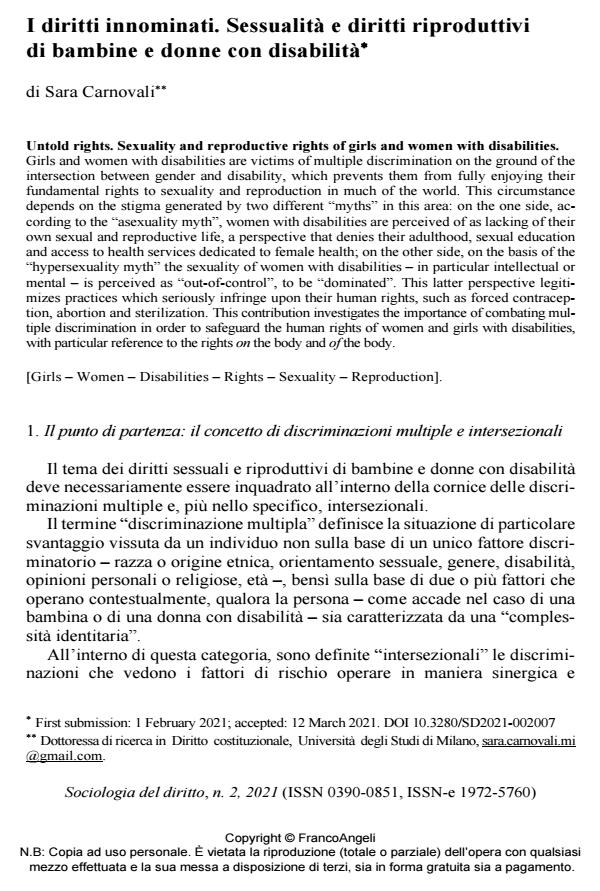Untold rights. Sexuality and reproductive rights of girls and women with disabilities.
Journal title SOCIOLOGIA DEL DIRITTO
Author/s Sara Carnovali
Publishing Year 2022 Issue 2021/2
Language Italian Pages 17 P. 132-148 File size 192 KB
DOI 10.3280/SD2021-002007
DOI is like a bar code for intellectual property: to have more infomation
click here
Below, you can see the article first page
If you want to buy this article in PDF format, you can do it, following the instructions to buy download credits

FrancoAngeli is member of Publishers International Linking Association, Inc (PILA), a not-for-profit association which run the CrossRef service enabling links to and from online scholarly content.
Girls and women with disabilities are victims of multiple discrimination on the ground of the intersection between gender and disability, which prevents them from fully enjoying their fundamental rights to sexuality and reproduction in much of the world. This circumstance depends on the stigma generated by two different "myths" in this area: on the one side, accord-ing to the "asexuality myth", women with disabilities are perceived of as lacking of their own sexual and reproductive life, a perspective that denies their adulthood, sexual education and access to health services dedicated to female health; on the other side, on the basis of the "hy-persexuality myth" the sexuality of women with disabilities - in particular intellectual or mental - is perceived as "out-of-control", to be "dominated". This latter perspective legitimizes practices which seriously infringe upon their human rights, such as forced contraception, abortion and sterilization. This contribution investigates the importance of combating multiple discrimination in order to safeguard the human rights of women and girls with disabilities, with particular reference to the rights on the body and of the body.
Keywords: Girls - Women - Disabilities - Rights - Sexuality - Reproduction
Sara Carnovali, I diritti innominati. Sessualità e diritti riproduttivi di bambine e donne con disabilità in "SOCIOLOGIA DEL DIRITTO " 2/2021, pp 132-148, DOI: 10.3280/SD2021-002007